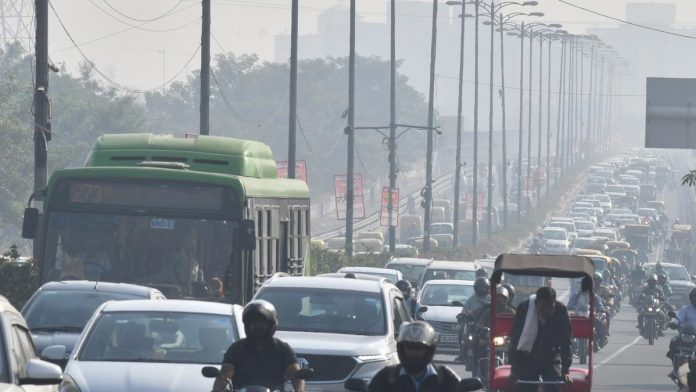NEW DELHI, Oct 28: Delhi’s air quality deteriorated to the “very poor” category on Saturday, and is predicted to worsen further due to unfavourable meteorological conditions, according to weather monitoring agencies.
The city’s average Air Quality Index (AQI) stood at 301 at 12 noon, worsening from 261 on Friday, according to the Central Pollution Control Board.
The AQI was 286 in neighbouring Ghaziabad, 268 in Faridabad, 248 in Gurugram, 284 in Noida, and 349 in Greater Noida.
An AQI between zero and 50 is considered ‘good’, 51 to 100 ‘satisfactory’, 101 to 200 ‘moderate’, 201 to 300 ‘poor’, 301 to 400 ‘very poor’, and 401 to 500 ‘severe’.
According to the Centre’s Air Quality Early Warning System for Delhi, the city’s air quality deteriorated to the ‘very poor’ category due to slow wind speed at night and a dip in temperatures.
The air quality is expected to remain very poor till the end of the month, it said.
Unfavourable meteorological conditions and a cocktail of emissions from firecrackers and paddy straw burning, in addition to local sources of pollution, push Delhi-NCR’s air quality to hazardous levels during winter.
According to an analysis conducted by the Delhi Pollution Control Committee, the capital experiences peak pollution from November 1 to November 15 when stubble burning incidents in Punjab and Haryana peak.
While Delhi is facing a sharp decline in air quality in the coming days, crucial data that helped the government prepare a strategy to mitigate the air pollution problem is missing.
The Ministry of Earth Sciences’ System of Air Quality and Weather Forecasting and Research, which provided data about the contribution of smoke from farm fires to Delhi’s air pollution, has not been providing updates, and associated officials are unaware of the reason.
“We are not aware of why updates on the SAFAR portal have stopped,” said an official at the Indian Institute of Tropical Meteorology, which operates the website. Similarly, data from the Decision Support System, a numerical model-based framework capable of identifying sources of particulate matter pollution in Delhi, isn’t accessible to the general public anymore.
Recently, Delhi Environment Minister Gopal Rai said the city government’s study to determine pollution sources in the national capital has been halted “unilaterally and arbitrarily” on the orders of DPCC Chairman Ashwani Kumar.
The Delhi government had last month launched a 15-point action plan to mitigate air pollution in the capital during the winter season, with a strong emphasis on addressing dust pollution, vehicular emissions, and the open burning of garbage.
Special drives to check dust, vehicular and industrial pollution are already underway in the city.
In keeping with the practice of the last three years, Delhi had last month announced a comprehensive ban on the manufacture, storage, sale, and use of firecrackers within the city.
A public awareness campaign, ‘Patakhe Nahi Diye Jalao,’ will soon be reintroduced to discourage firecracker burning.
The Government has also prepared a pollution mitigation plan for each of the 13 identified pollution hotspots — Narela, Bawana, Mundka, Wazirpur, Rohini, R K Puram, Okhla, Jahangirpuri, Anand Vihar, Punjabi Bagh, Mayapuri, Dwarka. (PTI)
Trending Now
E-Paper


